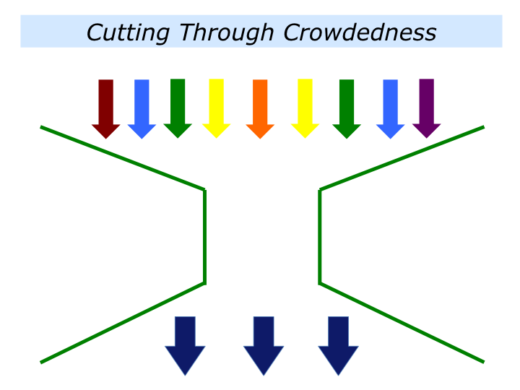
Great workers have the ability to cut through crowdedness in the activities where they excel. They can deal with masses of information – and many things happening at once – in situations that may confuse other people.
Getting to the heart of the matter, they clarify the real results to achieve. They then pursue their chosen strategy and perform superb work to achieve success.
Different people demonstrate this skill in different situations. Where do you have this ability? You may have it when solving technical problems, helping people who have emotional challenges, dealing with particular kinds of crises or whatever.
If you wish, try tackling the exercise on this theme. This invites you to do the following things.
Describe a specific situation in the past where you have been able to cut through crowdedness and achieve success.
Describe the specific things you did to cut through the crowdedness and achieve success.
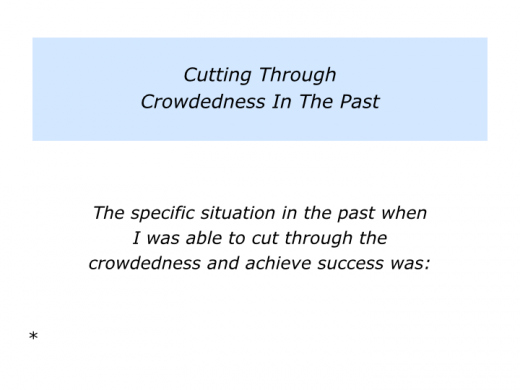
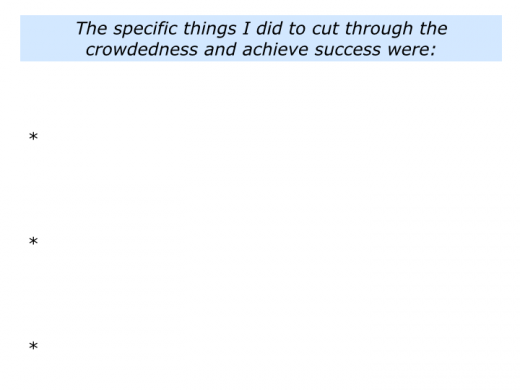
Looking back, what did you do right to manage the crowdedness? What were the principles you followed? How can you follow these principles – plus maybe add other skills – to manage complexity in the future?
Different people use different methods for dealing with such situations. Some take the following steps to manage the information and achieve success.
People Who Cut Through Crowdedness
They have a strong feeling for the activity. They are good at it and can quickly see patterns.
They gather information, cut through the crowdedness and make sense of what is happening. They get to the heart of the matter.
They clarify the real results to achieve – the desired picture of success.
They explore many strategies for achieving the goal. They often begin by mentally rehearsing the strategies – then translating some of these into action to see which works.
They pursue their chosen strategy, perform superb work and achieve the picture of success.
People may feel comfortable managing complexity in certain activities, but they may get thrown off-course quickly in other areas. The slightest complication or setback can lead to them feeling over-burdened.
People can learn tools for dealing with crowdedness in the areas where they feel uncomfortable. This often starts by them managing their emotions.
They can begin by learning how to stay calm – rather than panic – and clarify their desired picture of success. They can then aim to find and follow the strategy for achieving this goal.
People may be able to take this step by themselves. If it is beyond their area of expertise, however, they may find it easier to call in the experts. They can then rely on the experts – or work alongside them – to achieve success.
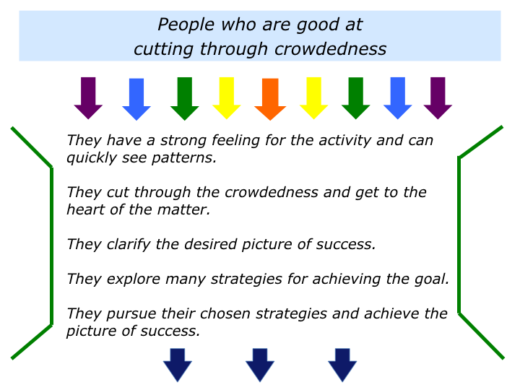
Experts Are Good At
Managing Crowdedness
Hubert and Stuart Dreyfus spent many years studying superb practitioners in different fields.
They created a well-known model that describes the five stages a person goes through to progress from being a novice to becoming an expert. Here is an introduction to the model.
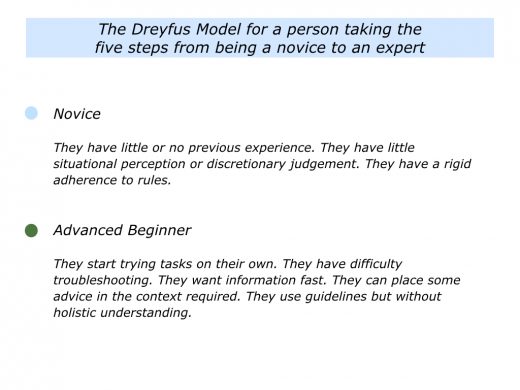
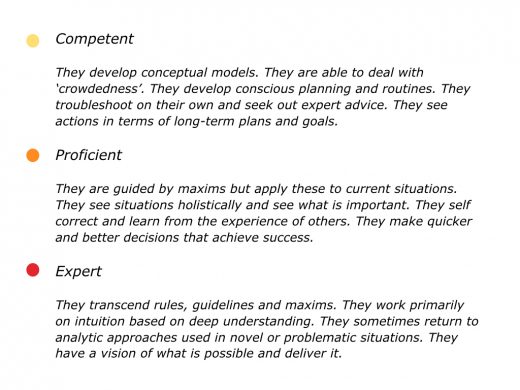
You will, of course, deal with crowdedness in your own way. If you wish, try tackling the exercise on this theme. This invites you to do the following things.
Describe a specific situation in the future where you may want to cut through the crowdedness and achieve success.
Describe the specific things you can do to be calm, clarify the real results to achieve and explore the potential strategies for achieving success.
Describe the specific things you can do then to pursue your chosen strategy – either by yourself or with the help of experts – and do your best to achieve success.
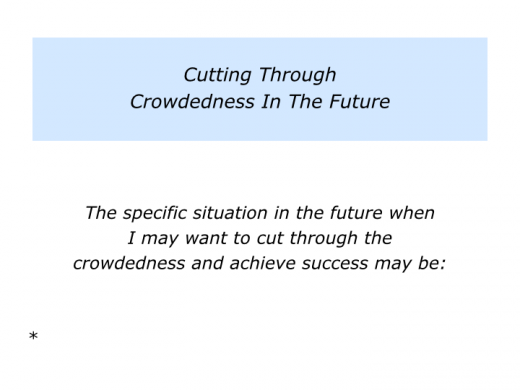
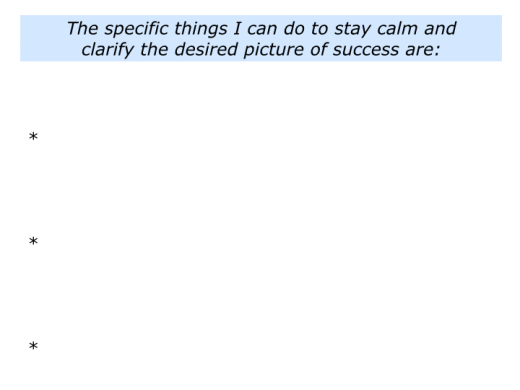
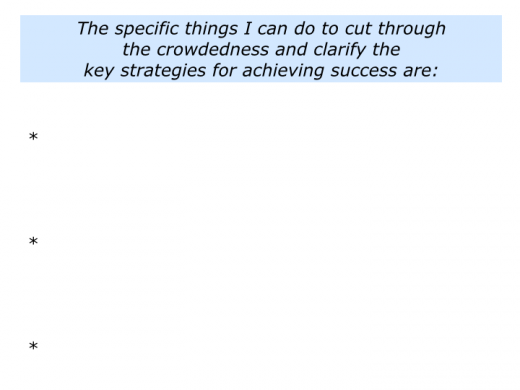
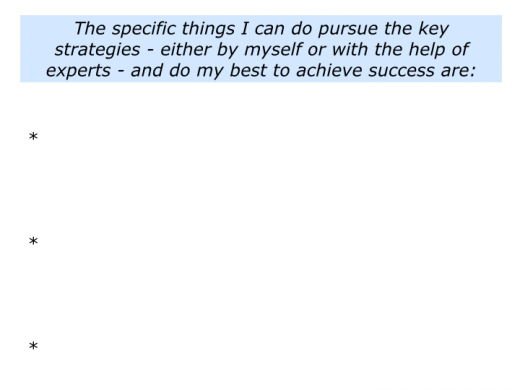






Leave a Reply